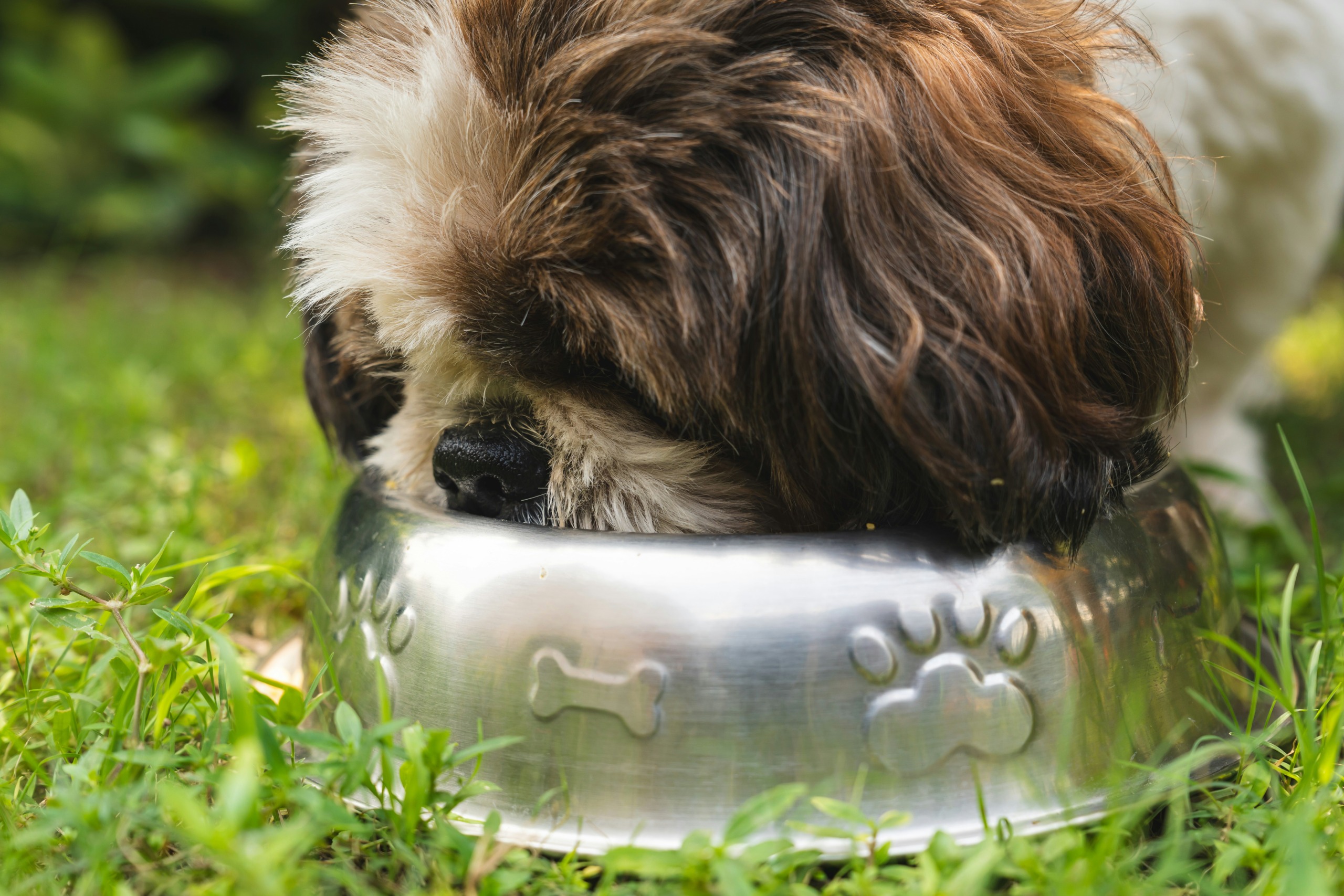The Facts About Artificial Preservatives and Antioxidants in Dog Food

DogFoodAdvisor is reader supported See how
Dog Food Advisor is 100% impartial and is never paid to promote any brand. But if you buy using links on this page, we may earn a referral fee.
Across the world, the negative health effects of ultra-processed foods (UPFs) on humans are gaining increasing headlines.
These UPFs can be classified as containing ingredients that you wouldn’t usually find in your kitchen closet, and can include anything from emulsifiers and flavorings to preservatives and antioxidants.
And worryingly, a number of these artificial ingredients are now being linked to concerning health issues, including everything from IBS, obesity and type 2 diabetes, to cancer and heart problems.
If you’ve read these stories and seen the research, it may have led you to examine your dog’s food labels more closely to see if similar ingredients are found in your canine pal’s daily dinner.
What are preservatives?
Preservatives are added to food to slow down the process of spoiling. They can be natural or artificial. Natural preservatives include things like rosemary oil or salt, and many are acids such as citric acid and sorbic acid which lower the pH, making mold less likely to grow. As a result, there are few concerns about their effects.
The difference between preservatives and antioxidants is that preservatives work to reduce microbial growth (mold), while antioxidants are there to stop oxidation and rancidity of fats (leading to a stale/off smell).
“Antioxidants and preservatives are important to include within pet foods to ensure that they remain safe and nutritious for your dog throughout the shelf life,” says Dog Food Advisor’s in-house nutritionist, Laura Ward. “There are different options chosen by manufacturers which, once you know how to identify them, gives you a choice.”
Artificial preservatives are used widely in dog food to increase the food’s shelf life and, like with preservatives used in human food, there are growing concerns regarding the health effects of artificial preservatives on our pets.
 Organic Dog Foods”>
Organic Dog Foods”>
What concerns are there over the use of artificial preservatives?
Labels on dog food can be confusing, and even more so when it comes to preservative use in pet food. According to the FDA:
“To be legally marketed, a food additive must have an approved food additive petition. A company submits a food additive petition to FDA to prove that the additive is safe for its intended use and works as expected. For example, the company must show that a preservative is safe for animals to eat and works to maintain the food’s freshness.”
The FDA then examines the petition and determines whether the additive is safe for use in pet food.
Most of the more controversial preservatives have been removed from pet food by manufacturers due to pressure from consumers, but it’s still worth closely checking ingredient lists to see if any have made their way into your dog’s food.
“Natural dog foods are a huge area of the market,” says Dog Food Advisor’s in-house nutritionist, Laura Ward. “Increasing numbers of pet parents prioritize the ‘natural’ description when it comes to the preservatives in their dog’s food, so that artificial preservatives, antioxidants, colors and flavors aren’t included.”
Labels may be deceiving, as sometimes a manufacturer uses the term ‘no added preservatives’, but that may not mean that there are zero preservatives in the food, as this term does not include preservatives added to ingredients before they’re added to the food.
This can be worrying as certain additives have been associated with safety issues in the past:
Ethoxyquin
The fat in poultry or meat meal needs preservatives to protect it from oxidization which makes it go rancid. The rules for dog food state that preservatives used in fat as an ingredient must be declared, but fat in meal (eg chicken meal, fish meal, bone meal, etc) gets around this rule as manufacturers don’t have to declare additives or substances that were added to ingredients before they arrive to be added to the dog food.
Fish meal has come under scrutiny for this very reason: some fish meal has ethoxyquin added to it to stop it spoiling during transportation at sea. This is because the U.S. Coast Guard requires fish meal to be treated with this preservative to stop it from spontaneously combusting during travel at sea.
In 2022 in Europe, the European Food Safety Authority (EFSA) reassessed the safety of ethoxyquin — which is also used in pesticides and was suspended from use in Europe in 2017 due to concerns over damage to DNA and cell mutation — and could not confirm its safety for animals or humans 1.
This is because ethoxyquin contains p-phenetidine, something that’s believed to mutate the genetic material of animals and humans. As a result, the researchers could not confirm that there would be no risk to animals with long life expectancies or those reared for reproduction. It was, however, considered safe for use for animals reared for meat production, and is permitted by the FDA for use in small quantities in pet food in the U.S.
 Organic Dog Foods”>
Organic Dog Foods”>
BHA & BHT
BHA (butylated hydroxyanisole or E320) and BHT (butylated hydroxytoluene or E321) both have worrying links to health issues. A study at the University of Hamburg found that they are “tumor promoters” 2. The U.S. Department of Health and Human Studies also concluded that BHA produces tumors in rats, mice, hamsters, and fish 3.
In addition, both preservatives have been linked to a range of health issues in other studies, from affecting the endocrine system (the E.U. has classed it as an “endocrine disruptor” 4), inducing allergic reactions, and effects on behavior including raised aggression and lowered learning in children 5.
TBHQ
TBHQ — tertiary butylhydroquinone — is a fat preservative used in pet food to extend shelf life. However, the same ingredient is used in explosive compounds, varnishes and lacquers.
Some studies have linked it to pre-cancerous stomach tumors and damage to cell DNA 6. For balance, other reports have linked it to helping prevent cancer 7, so we’ll leave you to make up your own mind.
Emulsifiers
Emulsifiers are commonly used to prevent ingredients from separating. However, a number of them have been found to cause health issues, including obesity and metabolic abnormalities when tested on mice 8.
For example, carboxymethylcellulose (CMC) and polysorbate-80 (P80), used in pet food to prolong shelf life and enhance flavor, may have been found to increase the risk of inflammatory bowel disease (IBD). Another emulsifier, carrageenan, which is used as a gelling agent, has been found to cause intestinal ulceration in rabbits, mice and rats, and is thought to increase the risk of IBD.
Other preservatives with concerning study results include propyl gallate (E310), which has been linked to tumor formation in rats, potassium sorbate (E202), which damages white blood cells, and propylene glycol, used to help retain moisture in some dog foods, which has been banned by the FDA for use in cat food but not dog food.
 Natural Dog Food”>
Natural Dog Food”>
How to avoid artificial preservatives
So how do you know how many additives are added to the ingredients before they’re put in the dog food by the manufacturer? There’s no sure-fire way of knowing. The only thing you can do is attempt to find out directly from the manufacturer, either on its website or by contacting them directly.
Other than that, the most successful way to avoid choosing food for your canine pal that contains nasty additives though is by changing their diet.
“This is where choosing ‘natural’ foods is important if you want to avoid artificial preservatives and antioxidants,” says Ward.
“It’s possible that a claim of ‘no added artificial preservatives’ or similar can be made, however ingredients also contain preservatives and antioxidants. In natural food, the ingredients included must be naturally preserved. Otherwise, it’s possible for ingredients to contain artificial preservatives and antioxidants.”
For more on the range of natural dog food available, have a look at Dog Food Advisor’s best natural dog foods.
Final word
The Dog Food Advisor does not accept money, gifts, samples or other incentives in exchange for special consideration in preparing our reviews.
However, we do receive a referral fee from online retailers (like Chewy or Amazon) and from sellers of perishable pet food when readers click over to their websites from ours. This helps cover the cost of operation of our free blog. Thanks for your support.
For more information, please visit our Disclaimer and Disclosure page.



